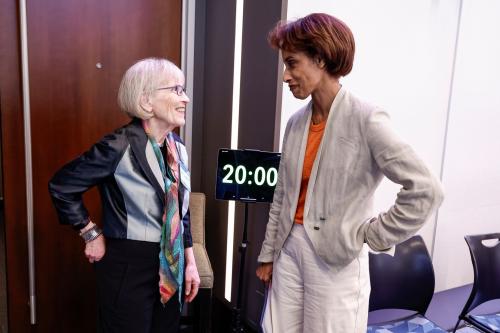Mr. Chairman and other members of the Committee, thank you for inviting me to testify before the Committee this morning. Social Security provides the foundation of retirement income, but must be combined with other saving to achieve full retirement security. Retirement income should thus be viewed in terms of tiers, with Social Security delivering a core tier of protection upon which additional retirement income must be built. Figure 1 (view full testimony) illustrates these tiers assuming a target for retirement income equal to 70 percent of pre-retirement wages, a replacement rate that is often recommended by financial planners.
Both tiers of retirement security face challenges. In that context, my testimony makes four main points:
Retirement security can be significantly enhanced by improving 401(k)s and IRAs through commonsense reforms that both sides of the Social Security debate should embrace. The individual accounts we already have — in the form of 401(k)s and IRAs — can be substantially improved and strengthened through a series of commonsense reforms that would make the pension system easier to navigate and more rewarding for American families. In the face of the difficult choices presented by the current system, many people simply procrastinate, which dramatically raises the likelihood that they will not save enough for retirement. Disarmingly simple concepts — such as changing 401(k) plans so that workers are automatically enrolled unless they opt out, and making it easy to save part of an income tax refund — have the potential to strengthen retirement security significantly. Both sides of the Social Security debate should agree on the straightforward steps necessary to improve 401(k)s and IRAs, and should come together to enact the changes immediately.
Although improving the accounts we already have on top of Social Security makes sense, introducing accounts within Social Security does not. Under the Administration’s proposal for accounts within Social Security, workers receive payroll revenue today, but pay the payroll revenue back, plus interest at a 3 percent real rate, at retirement through a reduction in traditional Social Security benefits. In effect, the individual accounts represent a “Social Security line of credit.” Workers drawing upon that line of credit have payroll revenue deposited into their individual account today, but then owe the funds back, plus interest, once they retire. The system is thus similar to a loan from the government to workers.



Commentary
TestimonySocial Security Reform
April 26, 2005